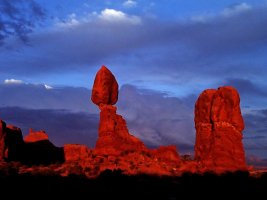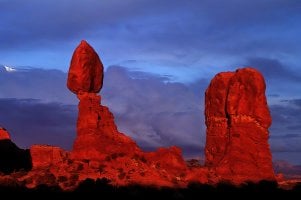Hi all
Long time lurker, first time poster. I bought my first camera in 2008 - a used 5D Classic. Took thousands of shots with it, traveled with it, dropped it, repaired it and still kind of love it. After buying the 24 TS-E II and shooting extensively with it on the 5D with the EE-S, I decided to upgrade to a used 5D II in 2014 due to live view and easier manual focus with the TS lens. University and a side gig as sports photographer took most of my attention away from the 5D II and 24 TS-E and I kind of left them unused for some years. Last year I became a father and thus picked up the R6 because the AF of the 5D II is just not up to todays standards. I love (almost) everything about the R6 and wish I'd have upgraded sooner.
This was my first purchase of a brand-new body. Although I got a good deal and I initially wasn't willing to spend the money for the R5, I keep catching myself side eyeing the R5. I shoot portraits of my son/wife and landscape, architecture, cityscapes. I never really cared about the technicalities of cameras and resorted to "pressing the shutter button" as the bodies at that time were all in the realm of 20 Mp and switching over to a D800 was not in the cards since I loved my 24 TS-E. Most threads on this board on the R5 are about birding, which I don't have either interest nor the lenses for. But I am really interested in the discussion about resolution and detail.
I went down that technicalities-rabbit-hole while researching the R6. "Only" 20 Mp seemed quite low to me and would not have been an update over my 5D II. I initially wished for 30 as in the R or 5DIV as an upgrade over my old camera. As I later learned 20 vs 30 Mp is only a 20% (6700/5500) increase and not 50% as I falsely assumed. The 45 Mp of the R5 seemed overkill for me as I didn’t need to double my resolution over my 5D II and wasn't willing to spend twice as much for the R5 over the R6. But wait, 8192/5472 is "only" a 50% increase and this puts it (in my mind at least) in a reasonable upgrade path over my previous body.
I don't do 8K video and am not relaying on heavy crops. I have a pretty decent lens kit with my 24 TS-E II, 35 1.4L II, 40 2.8, Tamron 85 1.8, 100L and the RF 70-200/4. I want to keep my bodies a long time and have a slight feeling of buyers remorse regarding the R6 or FOMO looking at that beautiful R5 resolution. It seems kind of irrational because I don’t really "need" the high resolution but it sure is great to download samples online and pixel peep trough those huge files. Having the possibility to print another 60x90cm print in 232 instead of 154 ppi seems, at least on paper (or monitor), better to me.
Another potential use case for all that resolution could beDSLR MILC-Scanning of my 120 negatives. Although I don't have a Mamiya 7 with those beautiful lenses and their incredible resolution prowess, increasing working distance and taking one shot of a 120 negative instead of stitching 3 shots together sure does sound like a faster process as well. But then again, how often am I going to do this?
I have a M1 Max MacBook Pro with enough processing power and disk space. I have good lenses and a sturdy tripod to make use of the resolution of the R5. Only thing pulling me back is that I don't really need the resolution. It's a continues back and forth. On the one hand I kind of want the resolution on the other I don't need it. I'd estimate 98% of my prints are going to be A4 max. (family pictures for albums, framing) but it sure is enticing to at least have the option to print really big once in a while in superb quality. The faster and easier MILC-Scanning process is another, albeit minor, factor in this back and forth.
Is the difference in resolution (232 vs 154 ppi) really that noticeable from a normal viewing distance? I argued in my head that it is not and I'd rather spend the difference between those two bodies on the upcoming RF 35 1.2L (it will eventually come…). But something in my head keeps coming back to the R5 and tries to convince me that I need 45 Mp.
Other differences/features of the R5 body over the R6 are "nice to haves" but not really necessary to me. The R6 is an almost perfect camera for my needs. If I could have the R5 sensor in the R6 body for 3k$ I'd have bought that instead. But at almost twice the price it is still a debate in my head I haven't completely settled and it keeps popping up once in a while. My R6 looks no different from a new camera and has about 4000 shots. I feel like if I'd sell it now and buy the R5 my financial loss wouldn't be that great as it's a like new camera still. But as said previously something in my mind hasn't clicked yet to pull the trigger on the R5.
TL;DR: Comment on why you chose the one over the other in regards to prints. Again, not interested in birding or heavy crops. It's all about the resolution and detail for prints. Please help me put a nail in that coffin for the foreseeable feature (as new bodies are always on the horizon). Thank you for reading.
Long time lurker, first time poster. I bought my first camera in 2008 - a used 5D Classic. Took thousands of shots with it, traveled with it, dropped it, repaired it and still kind of love it. After buying the 24 TS-E II and shooting extensively with it on the 5D with the EE-S, I decided to upgrade to a used 5D II in 2014 due to live view and easier manual focus with the TS lens. University and a side gig as sports photographer took most of my attention away from the 5D II and 24 TS-E and I kind of left them unused for some years. Last year I became a father and thus picked up the R6 because the AF of the 5D II is just not up to todays standards. I love (almost) everything about the R6 and wish I'd have upgraded sooner.
This was my first purchase of a brand-new body. Although I got a good deal and I initially wasn't willing to spend the money for the R5, I keep catching myself side eyeing the R5. I shoot portraits of my son/wife and landscape, architecture, cityscapes. I never really cared about the technicalities of cameras and resorted to "pressing the shutter button" as the bodies at that time were all in the realm of 20 Mp and switching over to a D800 was not in the cards since I loved my 24 TS-E. Most threads on this board on the R5 are about birding, which I don't have either interest nor the lenses for. But I am really interested in the discussion about resolution and detail.
I went down that technicalities-rabbit-hole while researching the R6. "Only" 20 Mp seemed quite low to me and would not have been an update over my 5D II. I initially wished for 30 as in the R or 5DIV as an upgrade over my old camera. As I later learned 20 vs 30 Mp is only a 20% (6700/5500) increase and not 50% as I falsely assumed. The 45 Mp of the R5 seemed overkill for me as I didn’t need to double my resolution over my 5D II and wasn't willing to spend twice as much for the R5 over the R6. But wait, 8192/5472 is "only" a 50% increase and this puts it (in my mind at least) in a reasonable upgrade path over my previous body.
I don't do 8K video and am not relaying on heavy crops. I have a pretty decent lens kit with my 24 TS-E II, 35 1.4L II, 40 2.8, Tamron 85 1.8, 100L and the RF 70-200/4. I want to keep my bodies a long time and have a slight feeling of buyers remorse regarding the R6 or FOMO looking at that beautiful R5 resolution. It seems kind of irrational because I don’t really "need" the high resolution but it sure is great to download samples online and pixel peep trough those huge files. Having the possibility to print another 60x90cm print in 232 instead of 154 ppi seems, at least on paper (or monitor), better to me.
Another potential use case for all that resolution could be
I have a M1 Max MacBook Pro with enough processing power and disk space. I have good lenses and a sturdy tripod to make use of the resolution of the R5. Only thing pulling me back is that I don't really need the resolution. It's a continues back and forth. On the one hand I kind of want the resolution on the other I don't need it. I'd estimate 98% of my prints are going to be A4 max. (family pictures for albums, framing) but it sure is enticing to at least have the option to print really big once in a while in superb quality. The faster and easier MILC-Scanning process is another, albeit minor, factor in this back and forth.
Is the difference in resolution (232 vs 154 ppi) really that noticeable from a normal viewing distance? I argued in my head that it is not and I'd rather spend the difference between those two bodies on the upcoming RF 35 1.2L (it will eventually come…). But something in my head keeps coming back to the R5 and tries to convince me that I need 45 Mp.
Other differences/features of the R5 body over the R6 are "nice to haves" but not really necessary to me. The R6 is an almost perfect camera for my needs. If I could have the R5 sensor in the R6 body for 3k$ I'd have bought that instead. But at almost twice the price it is still a debate in my head I haven't completely settled and it keeps popping up once in a while. My R6 looks no different from a new camera and has about 4000 shots. I feel like if I'd sell it now and buy the R5 my financial loss wouldn't be that great as it's a like new camera still. But as said previously something in my mind hasn't clicked yet to pull the trigger on the R5.
TL;DR: Comment on why you chose the one over the other in regards to prints. Again, not interested in birding or heavy crops. It's all about the resolution and detail for prints. Please help me put a nail in that coffin for the foreseeable feature (as new bodies are always on the horizon). Thank you for reading.
Last edited:


